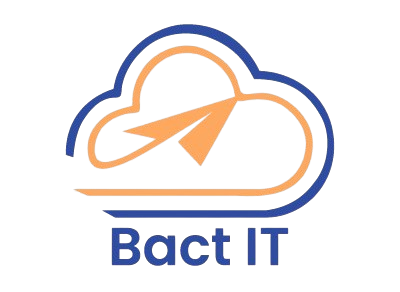Software Testing Course

We are committed to equipping individuals and organizations with the tools and expertise they need to thrive in a rapidly changing digital world.
Request A Quote !
Software Testing Course Outline
Duration: 40–60 Hours
Level: Beginner to Intermediate
Delivery Mode: Online / Offline
Target Audience: Aspiring software testers, QA professionals, Developers, IT students
Prerequisites: Basic knowledge of software development, programming concepts
Module 1: Introduction to Software Testing
- What is Software Testing?
- Importance and Objectives of Software Testing
- Role of a Software Tester in the Development Life Cycle
- Types of Software Testing: Manual vs. Automation Testing
- Software Development Life Cycle (SDLC) and Testing Models
- The Testing Process: Planning, Design, Execution, and Reporting
- Defects, Bugs, and Issue Tracking
Module 2: Software Testing Life Cycle (STLC)
- Overview of STLC Phases
- Requirement Analysis and Test Planning
- Test Design: Test Cases, Test Scripts, and Test Data
- Test Environment Setup
- Test Execution and Defect Reporting
- Test Closure and Reporting
- Tools for Test Management and Tracking
Module 3: Types of Testing
- Functional Testing: Black-box Testing, Unit Testing, Integration Testing, System Testing
- Non-Functional Testing: Performance Testing, Stress Testing, Load Testing, Usability Testing
- Manual Testing: Exploratory Testing, Regression Testing, Acceptance Testing
- Automation Testing: Benefits and Limitations of Automation
- White-box Testing: Code Coverage, Branch Testing, Path Testing
- Grey-box Testing: A Combination of Black-box and White-box Testing
- Acceptance Testing: Alpha and Beta Testing
Module 4: Test Case Design
- Writing Effective Test Cases
- Test Case Template and Structure
- Test Case Execution and Documentation
- Positive vs. Negative Test Cases
- Boundary Value Analysis (BVA) and Equivalence Partitioning
- Decision Tables and State Transition Testing
- Reviewing and Updating Test Cases
Module 5: Defect Management and Reporting
- Types of Defects: Major, Minor, Critical, Cosmetic
- Defect Life Cycle: From Detection to Closure
- Defect Tracking and Reporting Tools: JIRA, Bugzilla, Redmine
- Writing Effective Defect Reports
- Severity vs. Priority of Defects
- Root Cause Analysis for Defects
Module 6: Manual Testing Tools
- Introduction to Manual Testing Tools
- Using Test Management Tools: TestRail, Quality Center (ALM)
- Reporting and Tracking Bugs using JIRA
- Documenting Test Cases and Test Results
- Creating and Managing Test Data for Manual Testing
- Handling Test Environments
Module 7: Automation Testing Introduction
- What is Automation Testing?
- Benefits and Challenges of Automation
- When to Automate vs. When to Manual Test
- Overview of Automation Testing Tools
- Introduction to Test Automation Frameworks: Data-driven, Keyword-driven, Hybrid, and Modular
- Test Automation Life Cycle
Module 8: Automation Testing Tools (Selenium)
- Introduction to Selenium and WebDriver
- Setting up Selenium and Integrating with IDEs (Eclipse/IntelliJ)
- Writing Test Scripts in Java/Python for Web Applications
- Locators: ID, Class, XPath, CSS Selectors
- Handling Web Elements: Forms, Buttons, Links, Alerts, and Pop-ups
- Synchronization: Implicit vs. Explicit Waits
- Data-Driven Testing with Selenium and Excel
Module 9: Advanced Automation Testing with Selenium
- Selenium Grid for Parallel Testing
- Selenium WebDriver Integration with TestNG
- Page Object Model (POM) Design Pattern for Test Automation
- Implementing Continuous Testing in CI/CD Pipeline (Jenkins)
- Reporting Test Results using TestNG Reports and Extent Reports
- Handling Dynamic Elements and AJAX Requests in Web Applications
- Cross-browser Testing with Selenium
Module 10: Mobile Application Testing
- Introduction to Mobile Testing (Native, Web, Hybrid Apps)
- Mobile Testing Tools: Appium, Selenium for Mobile
- Setting Up Mobile Automation with Appium
- Testing Mobile Interfaces and Touch Events
- Mobile Device Emulators and Real Device Testing
- Mobile App Performance Testing: Load, Stress, and Battery Consumption
- Mobile App Security Testing
Module 11: Performance Testing
- Introduction to Performance Testing: Load, Stress, and Scalability
- Setting up Performance Testing with JMeter
- Analyzing Performance Test Results: Response Time, Throughput, and Latency
- Performance Testing Best Practices
- Performance Bottlenecks and How to Identify Them
- Integrating Performance Testing into Continuous Testing
Module 12: Security Testing
- Introduction to Security Testing
- Types of Security Tests: Penetration Testing, Vulnerability Scanning, Ethical Hacking
- Tools for Security Testing: OWASP ZAP, Burp Suite, Kali Linux
- Identifying Common Security Vulnerabilities: SQL Injection, XSS, CSRF
- Understanding the OWASP Top 10 Security Risks
- Writing and Reporting Security Testing Findings
Module 13: Test Reporting and Documentation
- Importance of Test Reporting
- Writing Comprehensive Test Reports
- Managing Test Logs, Traceability Matrix, and Coverage Reports
- Sharing Test Results with Stakeholders
- Best Practices for Test Documentation
- Preparing for Software Testing Audits and Reviews
Module 14: Agile Testing and Continuous Testing
- Introduction to Agile Methodologies and Agile Testing
- The Role of QA in Scrum and Agile Teams
- Working with Test-Driven Development (TDD) and Behavior-Driven Development (BDD)
- Continuous Testing in Agile Environments
- Tools for Agile Testing: Jira, Trello, Jenkins, Bamboo
- Collaboration Between Developers and Testers in Agile
Module 15: Final Project and Exam Preparation
- Capstone Project: Test a Full Application (Manual and Automated Tests)
- Test Execution, Defect Reporting, and Final Test Case Review
- Best Practices for Preparing for Software Testing Certifications
- Mock Tests and Exam Preparation
- Career Tips for Aspiring Software Testers
